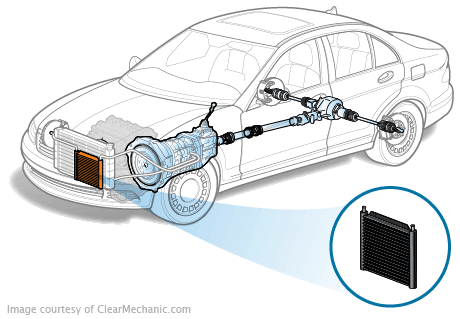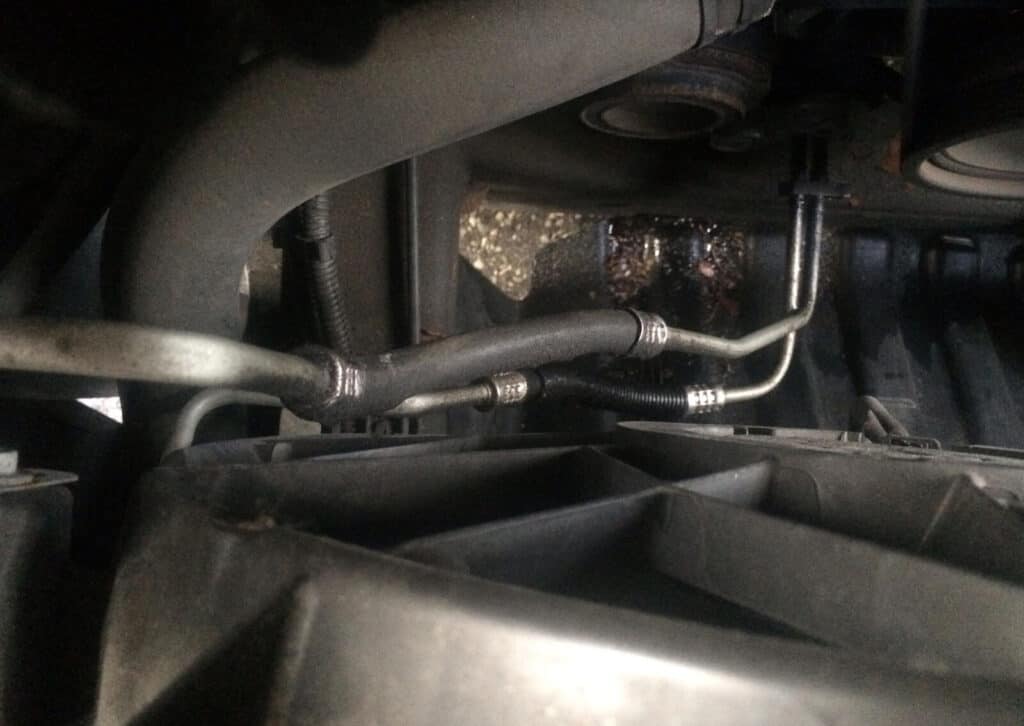Introduction: Keep Your Transmission Cool and Efficient with Properly Functioning Oil Cooler Lines
Transmission oil cooler lines play a crucial role in maintaining the temperature of your vehicle’s transmission fluid. In this guide, we’ll discuss their importance, the cost of replacement in Canada, and tips for prolonging their lifespan. Let’s get started!
What are Transmission Oil Cooler Lines?
Transmission oil cooler lines are hoses that transport transmission fluid from the transmission to the oil cooler and back. They help dissipate heat generated by the transmission during operation, maintaining optimal fluid temperature and preventing overheating.
How Much Will it Cost to Replace Transmission Oil Cooler Lines in Canada?
• Parts: $50 – $150
• Labor: $100 – $300 (1 to 3 hours)
• Total: $150 – $450
The cost of replacing transmission oil cooler lines in Canada varies depending on the make and model of your vehicle. On average, you can expect to pay between $150 and $450 for parts and labor.

What are the Symptoms of Faulty Transmission Oil Cooler Lines?
Symptoms of faulty transmission oil cooler lines may include:
• Transmission fluid leaks: One of the most common symptoms is visible transmission fluid leaking from the lines or connections, often leaving spots on the ground beneath the vehicle.
• Overheating transmission: Restricted or blocked oil cooler lines can lead to inadequate transmission fluid circulation, causing the transmission to overheat. This may be indicated by a high transmission temperature warning light or gauge.
• Poor transmission performance: Insufficient fluid flow due to damaged or leaking lines can cause erratic shifting, slipping, or delayed gear engagement. The transmission may also struggle to find the correct gear or shift harshly.
• Low transmission fluid level: A decrease in transmission fluid level may be caused by leaks in the cooler lines. Low fluid levels can lead to improper lubrication and potential transmission damage.
• Burning smell: A burning smell may be noticed while driving, especially under heavy load or during aggressive acceleration, due to the transmission overheating or fluid leaking onto hot engine components.
• Contaminated transmission fluid: In rare cases, damaged cooler lines may allow contaminants like dirt or debris to enter the transmission fluid, which can cause damage to internal components and lead to poor performance.
How Long Do Transmission Oil Cooler Lines Last?
Transmission oil cooler lines can last anywhere between 160,000 and 240,000 kilometers, depending on factors like driving habits, climate, and overall maintenance.
How Do Transmission Oil Cooler Lines Become Defective?
Transmission oil cooler lines can become defective due to several factors:
• Age and wear: Over time, the lines may corrode, crack, or deteriorate, leading to leaks or restricted flow of transmission fluid.
• Heat and pressure: Constant exposure to heat from the transmission and engine, as well as the pressure from the transmission fluid, can weaken the lines and lead to failure.
• Vibration and stress: Vibrations and stress from regular driving can cause the lines to wear or become damaged, especially at connection points.
• Road debris and impacts: Exposure to road debris, rocks, or other foreign objects can puncture or damage the lines, causing leaks.
• Poor installation or maintenance: Incorrect installation, inadequate maintenance, or use of improper parts can contribute to premature failure of the lines.
• Manufacturing defects: In some cases, the lines may have defects from the manufacturing process that lead to failure or issues with performance.

How Can Faulty Transmission Oil Cooler Lines Affect Other Systems in the Car?
A faulty transmission oil cooler line can cause:
• Transmission overheating: Faulty transmission oil cooler lines can lead to overheating, causing premature wear and potential failure of the transmission.
• Insufficient lubrication: Leaking transmission oil cooler lines can cause a low transmission fluid level, leading to inadequate lubrication of transmission components, increasing wear and tear.
• Erratic shifting: Low transmission fluid levels due to faulty cooler lines may result in erratic shifting, affecting overall driving performance and comfort.
• Damage to surrounding components: Leaking transmission fluid can cause damage to other vehicle components, including rubber and plastic parts, increasing the risk of additional system failures.
• Increased risk of accidents: Transmission issues caused by faulty oil cooler lines can make the vehicle unpredictable and challenging to control, increasing the risk of accidents.
• Costly repairs: Ignoring faulty transmission oil cooler lines can lead to severe transmission damage, resulting in expensive repairs or replacement.
Is it Safe to Drive with Faulty Transmission Oil Cooler Lines?
Driving with faulty transmission oil cooler lines can pose a significant risk to your vehicle’s health and overall safety. These lines are responsible for carrying transmission fluid between the transmission and the external oil cooler, helping to keep the transmission at the correct operating temperature. When the oil cooler lines are compromised, the transmission may overheat, leading to decreased performance, potential transmission damage, and even complete failure. Furthermore, a leak in the lines could result in a rapid loss of transmission fluid, causing inadequate lubrication, erratic shifting, or complete transmission failure.
It is crucial to address any issues with your transmission oil cooler lines as soon as they are detected. If you notice any signs of a leak, such as fluid puddles under the vehicle, a low transmission fluid level, or an overheating transmission, it is essential to have your vehicle inspected by a professional mechanic immediately. Continuing to drive with faulty transmission oil cooler lines could cause severe damage to your transmission, which is not only dangerous but can also be costly to repair. To ensure the safety and reliability of your vehicle, it is best to avoid driving if you suspect any issues with the transmission oil cooler lines.
How Can I Make My Transmission Oil Cooler Lines Last Longer?
• Regularly inspect the cooler lines for signs of wear, corrosion, or damage
• Replace the transmission fluid according to your vehicle manufacturer’s recommendations
• Ensure that the transmission oil cooler is functioning properly
Can a Mobile Mechanic Replace Transmission Oil Cooler Lines?
Yes, a mobile mechanic can replace transmission oil cooler lines, provided they have the necessary tools and expertise. This convenient service allows you to have your cooler lines replaced without having to visit a repair shop.

Conclusion: Transmission Oil Cooler Line Replacement
Properly functioning transmission oil cooler lines are essential for maintaining optimal transmission fluid temperature and preventing overheating. By following the tips provided in this guide, you can prolong the life of your cooler lines and keep your transmission running smoothly.
Next Steps
Book Your Transmission Oil Cooler Line Replacement Service
The service most frequently booked by those who read this article is Transmission Oil Cooler Line Replacement. Uchanics’ expert technicians make the process even more convenient by bringing the service right to your doorstep. We perform this job at your home or office, covering over 40 cities in Ontario, including Toronto, Mississauga, Brampton, Oshawa, Ajax, Scarborough, and more. Our commitment to excellence has earned us more than 700 glowing 5-star reviews. Choose Uchanics for your Transmission Oil Cooler Line Replacement and experience unparalleled convenience and top-quality service.
